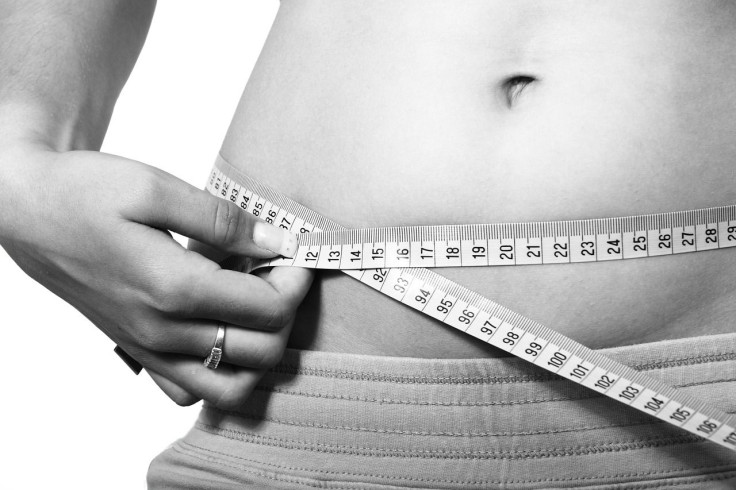Eating Disorders: Apple-Shaped Body Shape May Predict Risk For Binge Eating

An apple-shaped body may be more at risk for developing disordered eating habits, finds a new study published in The American Journal of Clinical Nutrition.
The psychology behind eating disorders is regularly explored, but fewer studies consider potential biological factors. To lead study author Dr. Laura Berner, these biologically based factors can be greater predictors of disordered eating — and in the study's preliminary findings, she and her team find "centralized fat distribution may be an important risk factor for the development of eating disturbance, specifically for loss-of-control (LOC) eating." Centralized fat refers mostly to a larger percentage of abdominal fat. And, LOC eating is believed to be "the most important feature of the binge-eating episodes of bulimia."
Berner and her team analyzed a 2-year study previously conducted at two universities in Philadelphia (Drexel University and the University of Pennsylvania) that was designed to determine how effective weight gain prevention programs were for women in their freshman year of college. Given dieting, weight suppression, and body dissatisfaction are predictors of weight gain, participants had to report at least one of the following criteria: they were currently dieting to lose weight; had a history of dieting to lose weight in the past; their highest lifetime weight minus current weight; and/or elevated body dissatisfaction.
In the end, each woman was reportedly at a higher risk for weight gain and eating disorder development, though they did not have a disorder at the start of the study.
Students completed assessments at baseline, then again at six weeks, six months, a year, and two years later, where researchers measured their height, weight, and total body fat percentage; researchers also noted where body fat was distributed. Students were also assessed for disordered eating behaviors, including self-reported LOC and depressive symptoms. Researchers noted women with greater central fat deposition and elevated depressive symptoms also report higher body dissatisfaction.
The results showed women with greater central fat stores were less satisfied with their bodies in general, and independent of BMI and depressive symptoms, larger stores of trunk fat (hips and back), especially in the abdominal region, may represent a risk factor for LOC eating development. Additionally, "larger percentages of fat stores in these central regions and body dissatisfaction may serve as maintenance of exacerbation factors for LOC eating."
In a press release, Berner said these results suggest fat deposition increases disordered eating risk above and beyond other known risk factors. For example, she said students with a one-unit increase in the percentage of body fat stored in the abdominal region was associated with a 53 percent increase in the risk of developing LOC eating over the course of the study, whereas total percentage body fat did not predict LOC eating.
"It's possible that this kind of fat distribution is not only psychologically distressing, but biologically influential through, for example, alterations in hunger and satiety signaling," Berner said. "Fat cells release signals to the brain that influence how hungry or satiated we feel. Our study didn't include hormone assays, so we can't know for sure, but in theory it's possible that if a centralized distribution of fat alters the hunger and satiety messages it sends, it could make a person feel out of control while eating.”
Greater fat storages have also been studied in the development of anorexia nervosa. Since the participants in the present study didn't develop either bulimia or anorexia after two years, Berner concludes this would be the next place to further this research, to see if greater fat stores are more likely to lead to eating disorder.
Source: Berner LA et al. Examination of Central Body Fat Deposition as a Risk Factor for Loss-of-Control Eating. The American Journal of Clinical Nutrition. 2015.



























